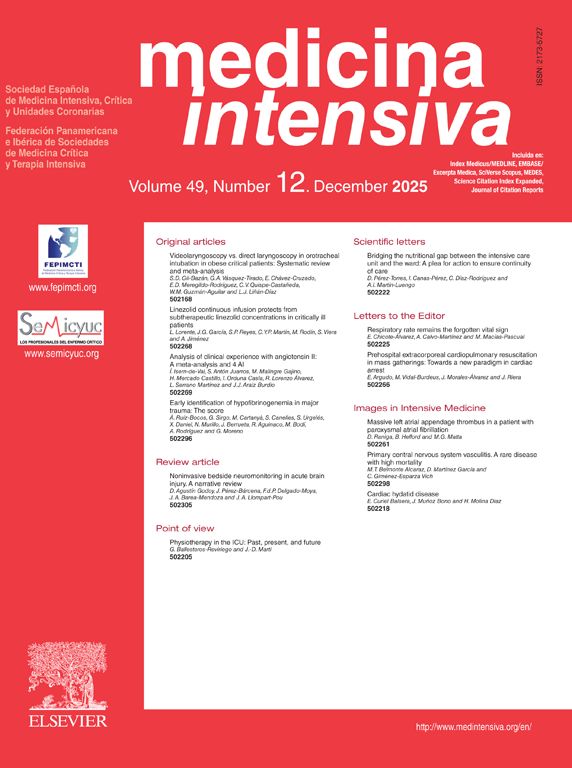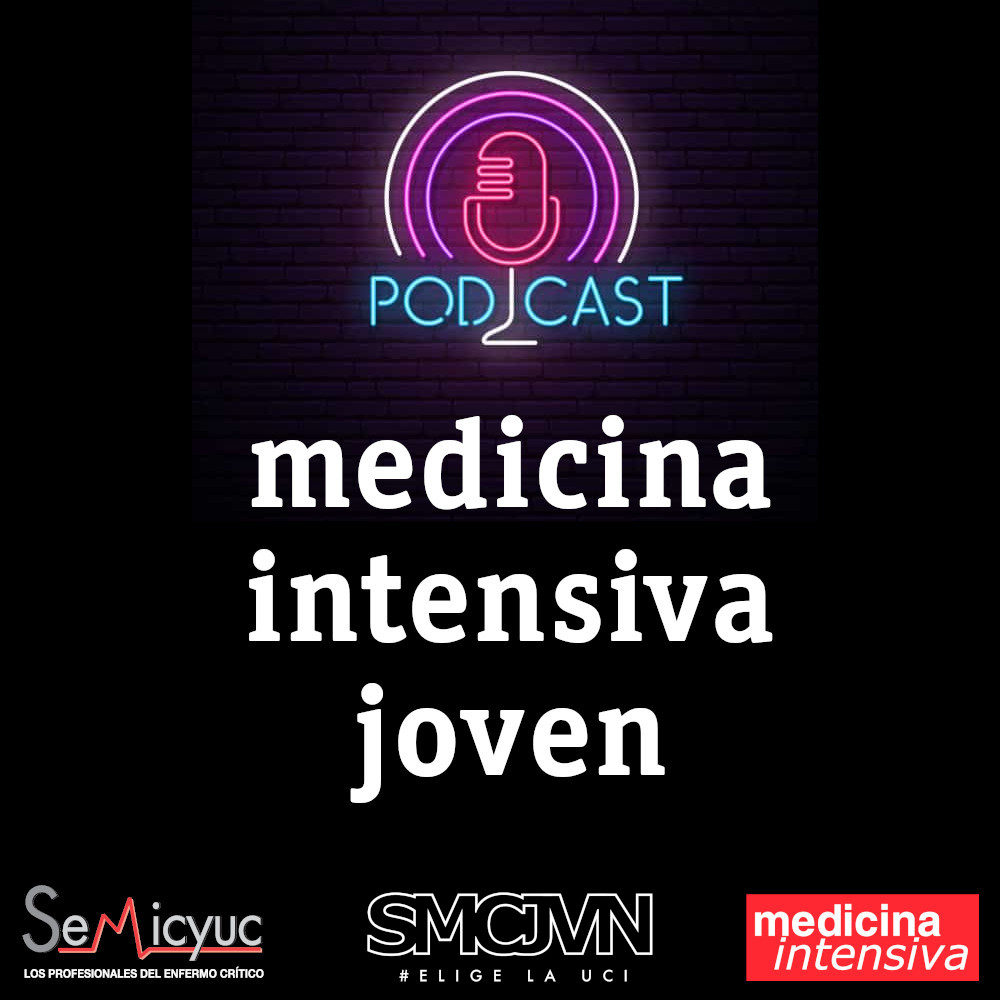For those of us of a certain age, bed rest was the first recommendation for childhood illnesses that are no longer seen today thanks to the existence of vaccines. In recent decades, active and passive exercise during illness has become increasingly important for patient recovery, changing the care paradigm for many conditions. It is now common to see patients who have undergone knee replacement surgery getting up and walking around in the post-operative period, or patients who have had a myocardial infarction being discharged 48 h after the event. The care of critically ill patients has also evolved from absolute rest to early mobilization, using passive or instrumental means (vibrators, electrostimulation), or facilitating active mobilization1 combined with a strategy of lighter and ultrashort sedation.
Indicators of ICU-acquired weakness, included in the post-intensive care syndrome, are one of the current major concerns among the sequelae of prolonged ICU admission of extremely critically ill patients.2 In this sense, the COVID-19 pandemic has had a tremendous impact on the recognition of the need for early mobilization and physiotherapy, leading to an increase in the evidence in favor of such measures. While outcome indicators in favor of lesser mortality have not been established, early mobilization has been shown to result in fewer days on mechanical ventilation, as well as in shorter ICU and hospital stays.3 This constitutes relevant evidence for convincing the management of centers to implement early mobilization. Likewise, a reduction in acquired weakness has been demonstrated, with better muscle strength indicators at 6 months, and therefore better data referred to functional independence.4
In contrast, early mobilization strategies are difficult to implement, mainly for organizational and workload reasons. In our units, we are all aware that it is essential to convince professionals and to have active cooperation at all levels in order to achieve high rates of early mobilization in our patients. In this regard, despite clear evidence in favor of early mobilization, the amount of existing literature on the reasons for rejecting mobilization in critically ill patients is notorious.5 Apart from workload considerations, the clinical condition of the patient plays a preponderant role among the aspects that cause such refusal. The presence of mechanical ventilation in the acute phase, hemodynamic instability with vasoactive amine drug dependence, delirium,6 or the presence of drains, complex wounds, ECMO devices, or severe burns, are all important barriers to implementing these measures.7 Likewise, the fear of possible adverse events during mobilization works against the implementation and maintenance of these strategies, making it difficult to appreciate their importance in the face of the difficulties involved.8
In this issue of the journal, we publish a systematic review with meta-analysis on the use of early mobilization in patients with cardiogenic shock,9 where data from mostly observational studies support the idea that this is a safe and feasible strategy, i.e., the incidence of adverse events is sufficiently low and reversible (arterial hypotension, tachycardia) to justify its use, given the beneficial effects, and the procedures involved can be performed without too much difficulty.
In the analysis performed it is noteworthy, although not surprising, that the rate of early mobilization decreases as the doses of drugs administered increase. Obviously, in these circumstances, the depth of sedation and the presence of other devices (ECMO, extrarenal filtration) complicate the implementation of early mobilization. However, the fact that the average number of patients mobilized at high doses achieved in three studies was 7% (95%CI: −3 to 16) suggests that these strategies are feasible to some extent even with high doses of amines.
Other questions relevant to the interpretation of the results and implementation of these practices include the timing of early mobilization—although there seems to be agreement that it should be within the first 72 h.10 On the other hand, it is also important to know in detail the degree of early mobilization achieved, considering the severity and invasiveness of the patient, and whether the procedures used apply to our units. Therefore, it is important to perform studies in homogeneous groups of patients, as in the present study, and to stratify the analysis according to subgroups of higher risk and intervention. In any case, as with any other therapeutic intervention, there are different "doses" of treatment, from passive mobilization or instrumental mobilization to moderate exercises in bed, standing or walking.
However, the study has the limitation of being a meta-analysis of predominantly observational studies. More studies are therefore needed in this type of patients, especially controlled clinical trials based on clear definitions of mobilization and targeting groups of patients with disease conditions and invasive treatments where a high rate of acquired weakness among survivors is expected. This would allow us to know to what extent targeted early mobilization therapy could improve the expectations of recovery as well as reduce the length of stay, calibrated according to its intensity.
Probably the first way to improve the outcomes for extremely critical survivors is to be aware from the moment of admission of all the aspects that affect their subsequent recovery, and among these it seems increasingly clear that avoiding oversedation and prolonged immobilization are two of the most important factors. And that is everyone's job.
FundingThe present study has received no funding of any kind.
Conflict of interestWe have no conflicts of interest related to the subject of this article.
Data availabilityNo artificial intelligence tools have been used in the generation of figures or in the preparation of the text.





